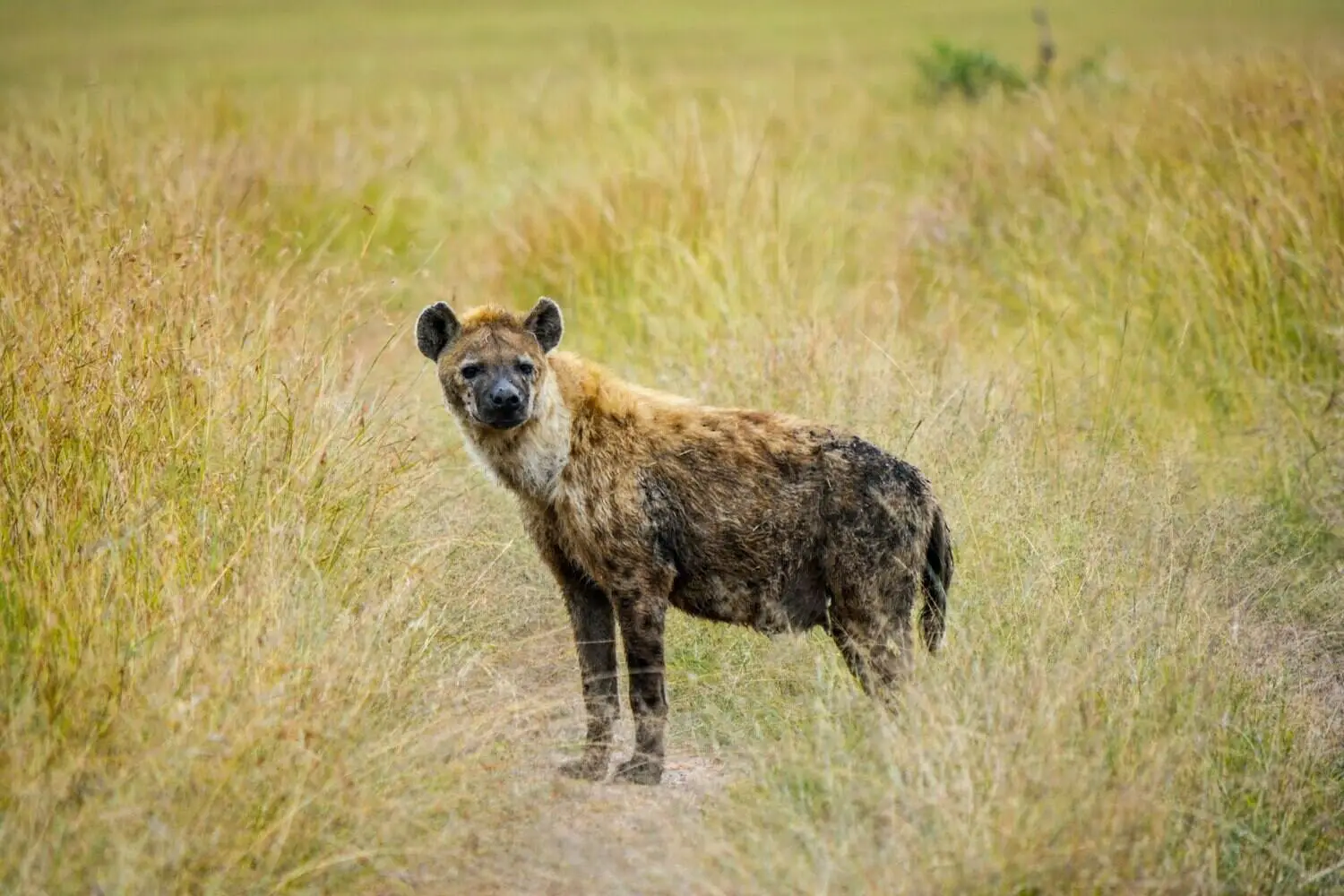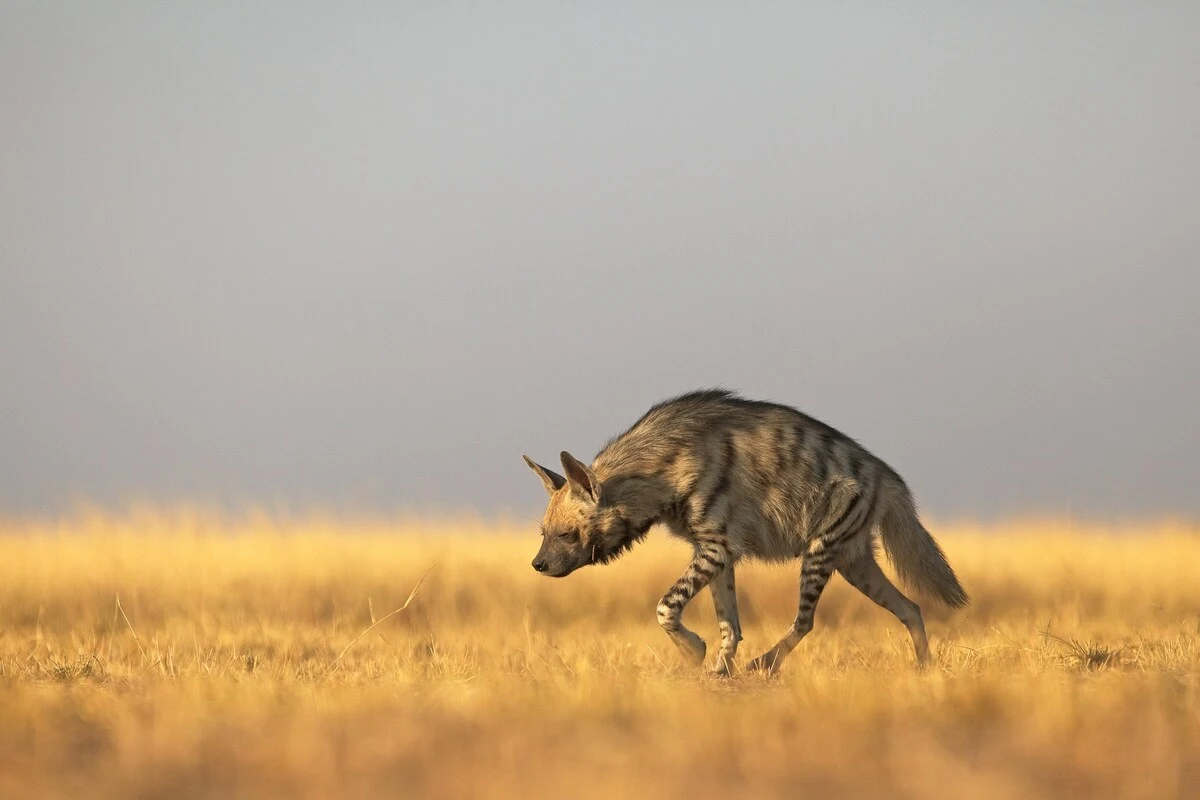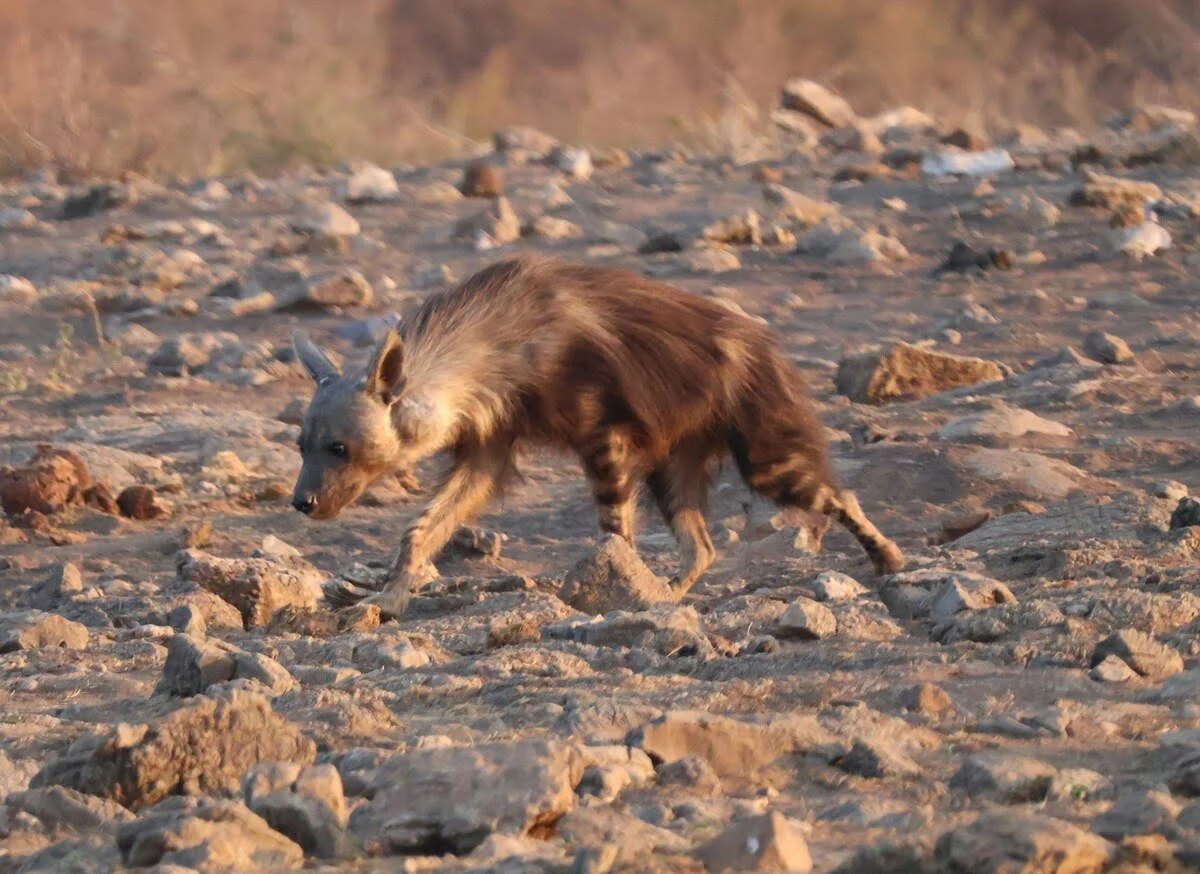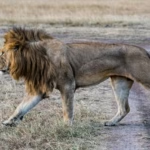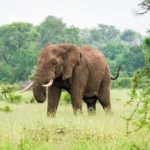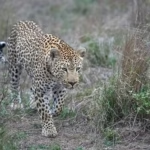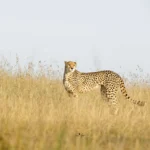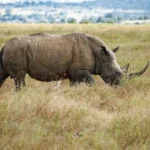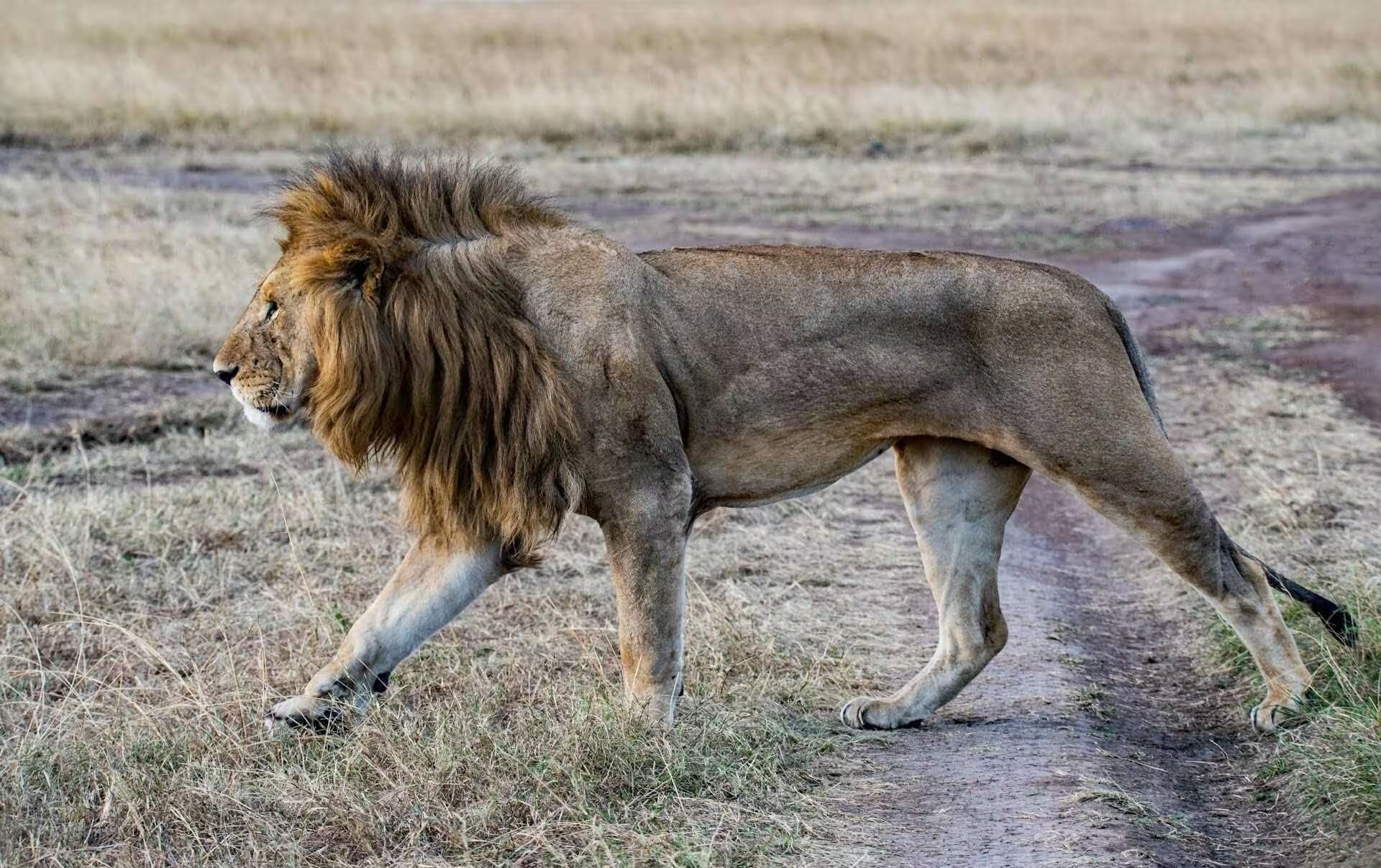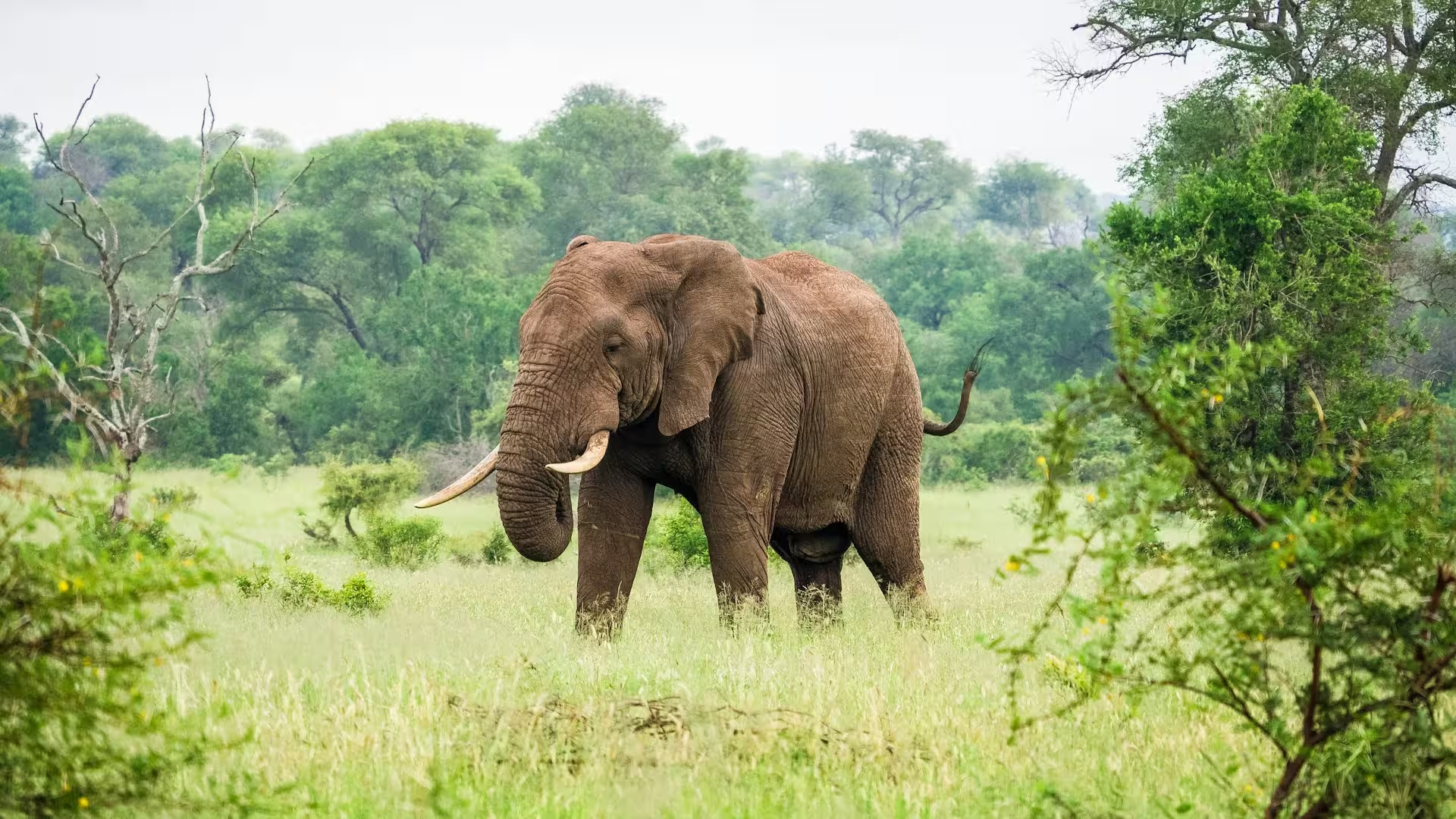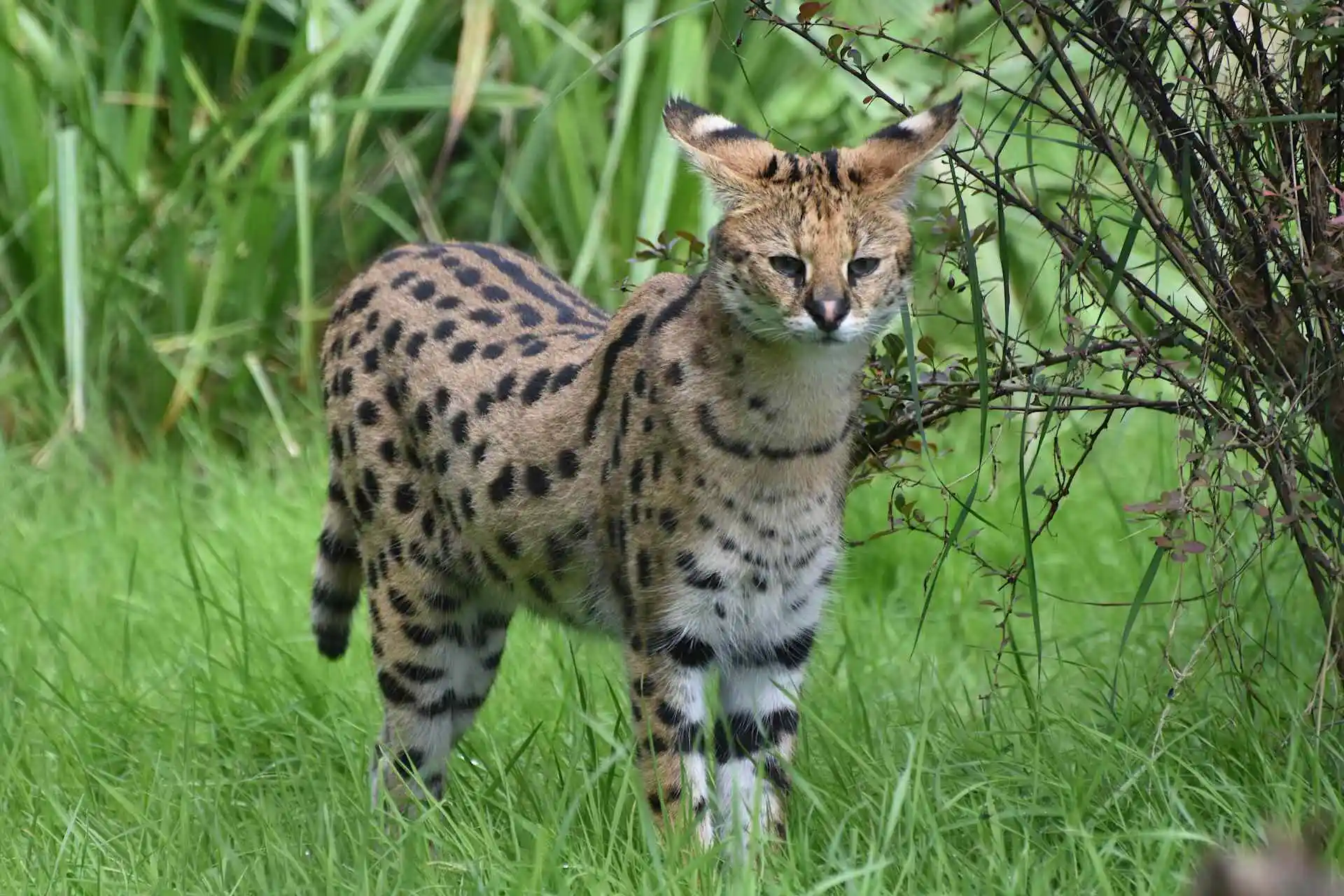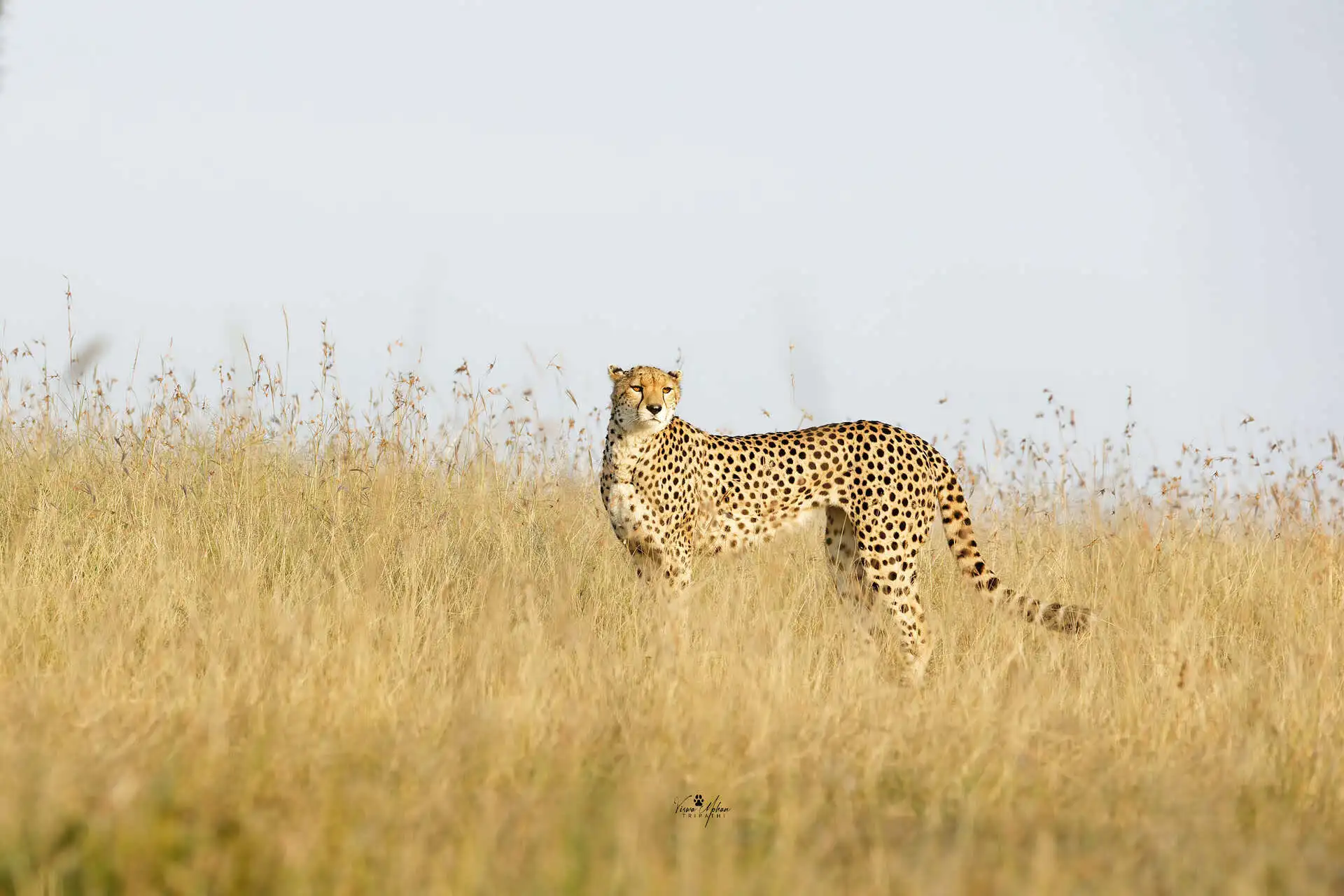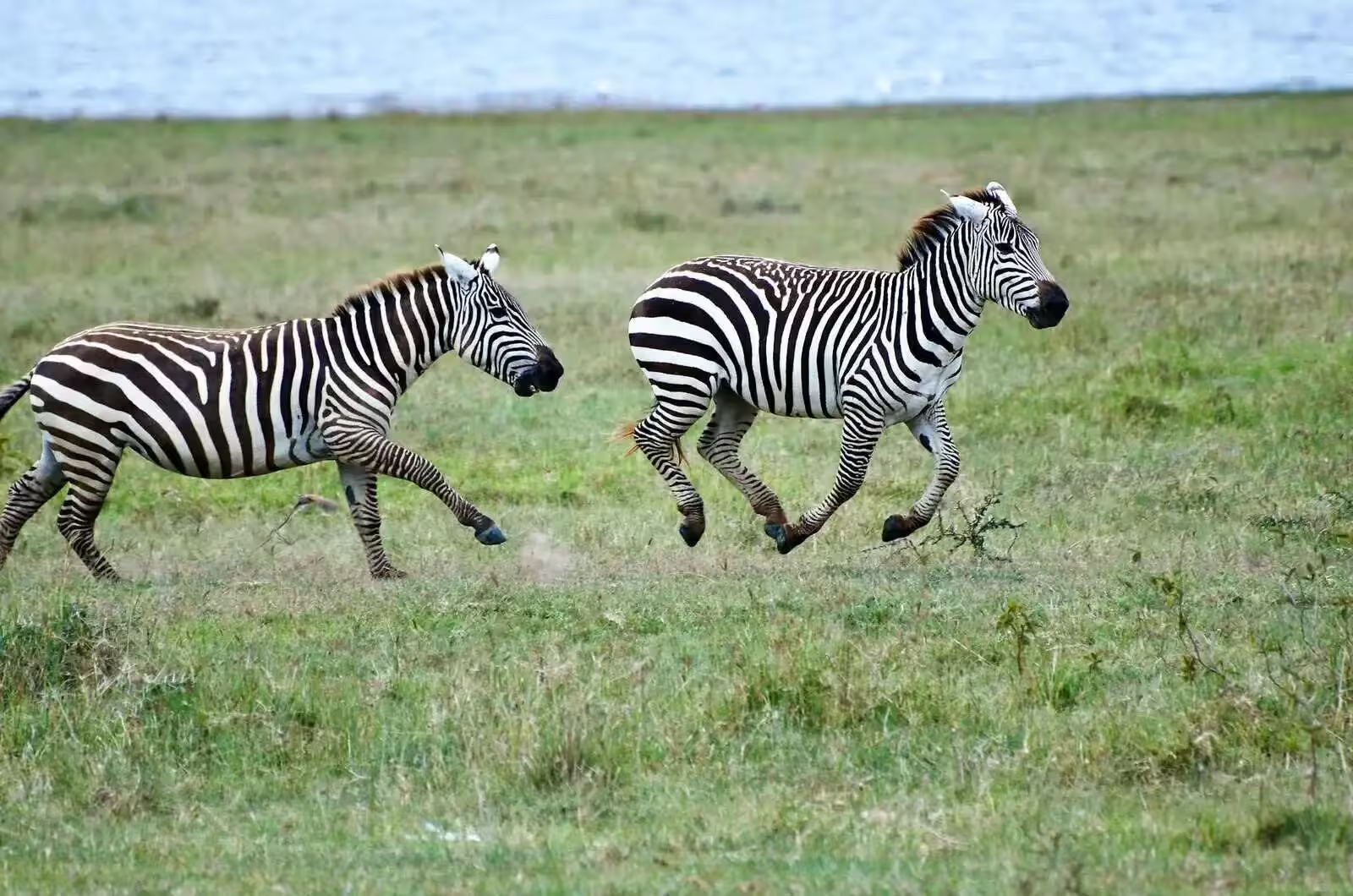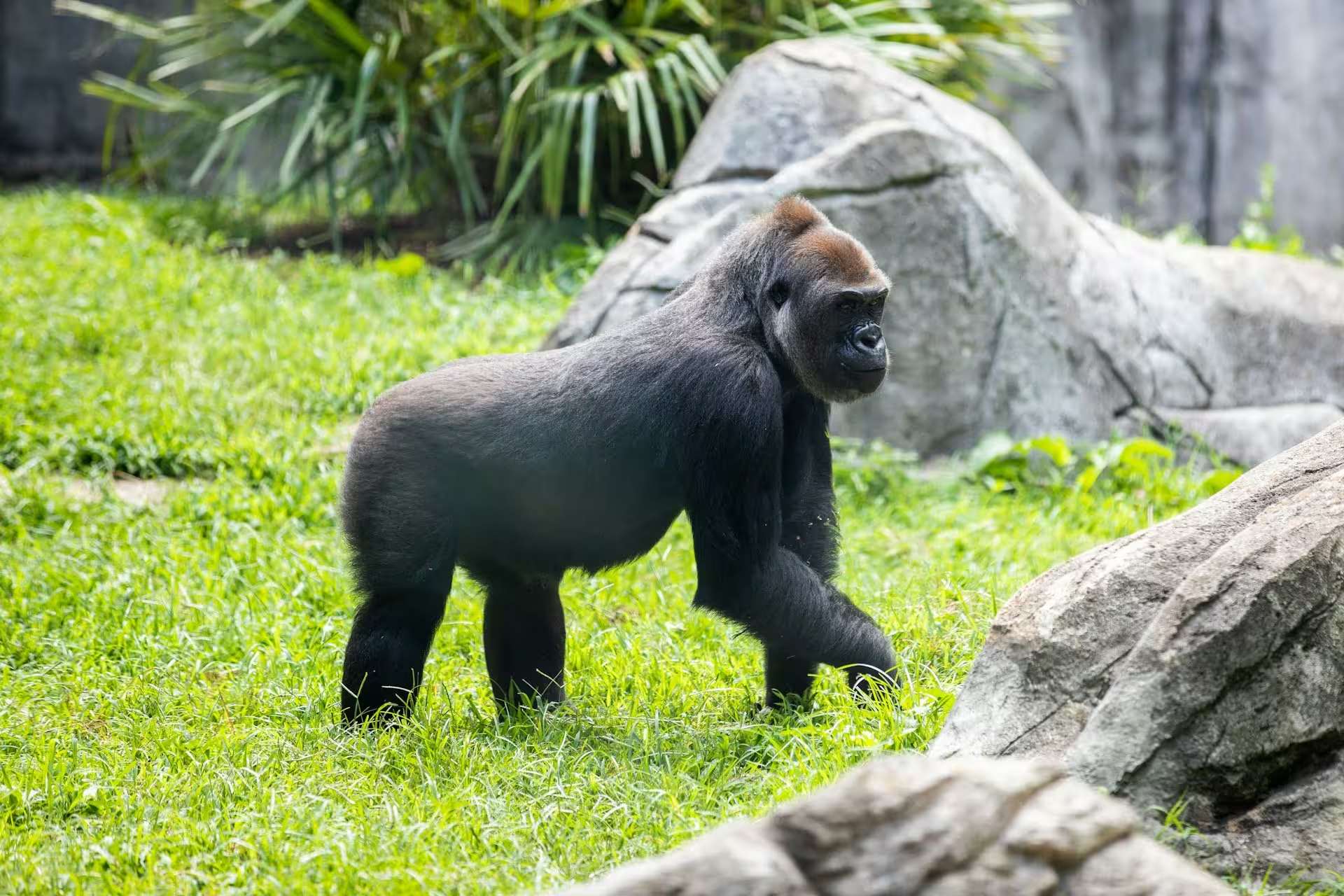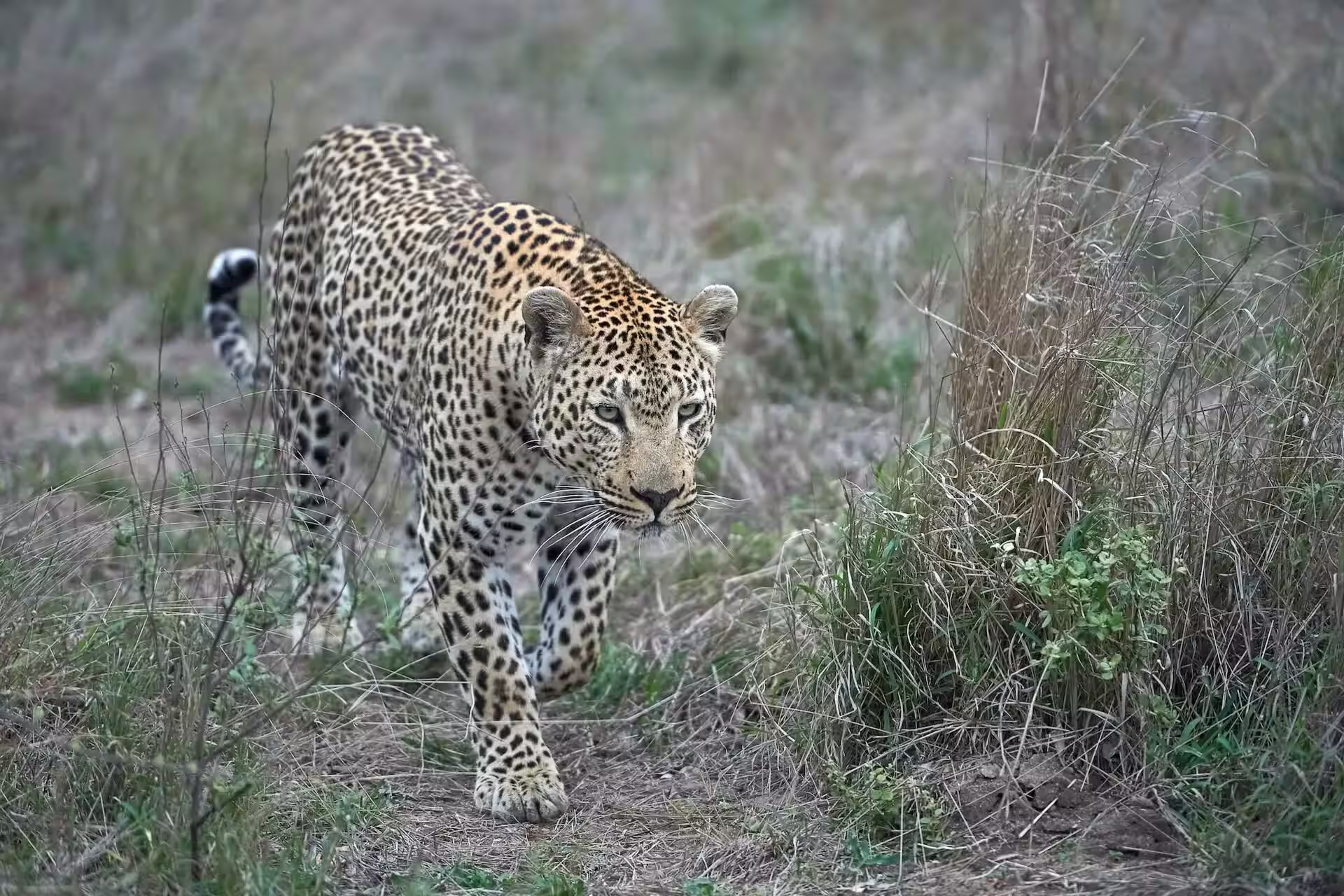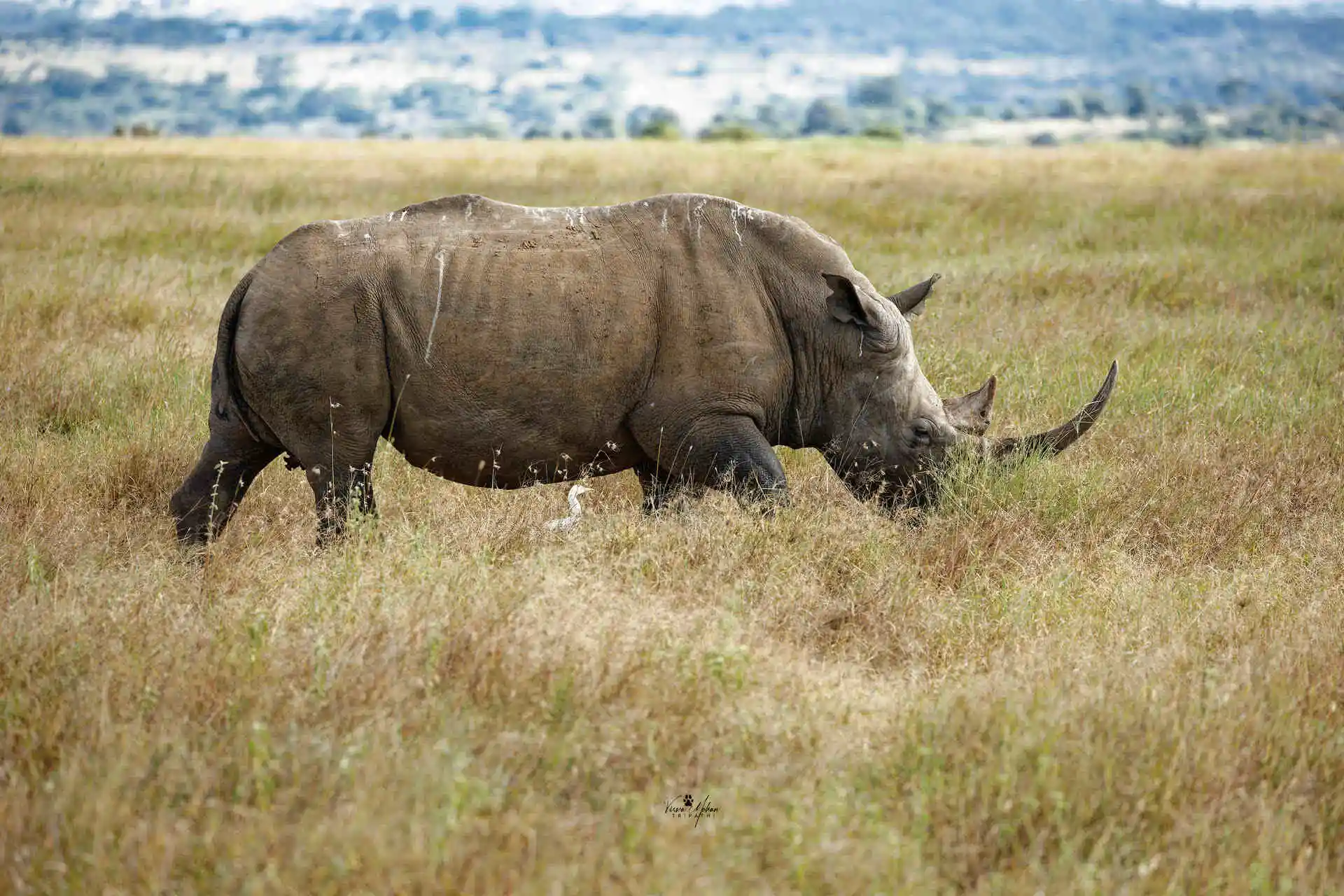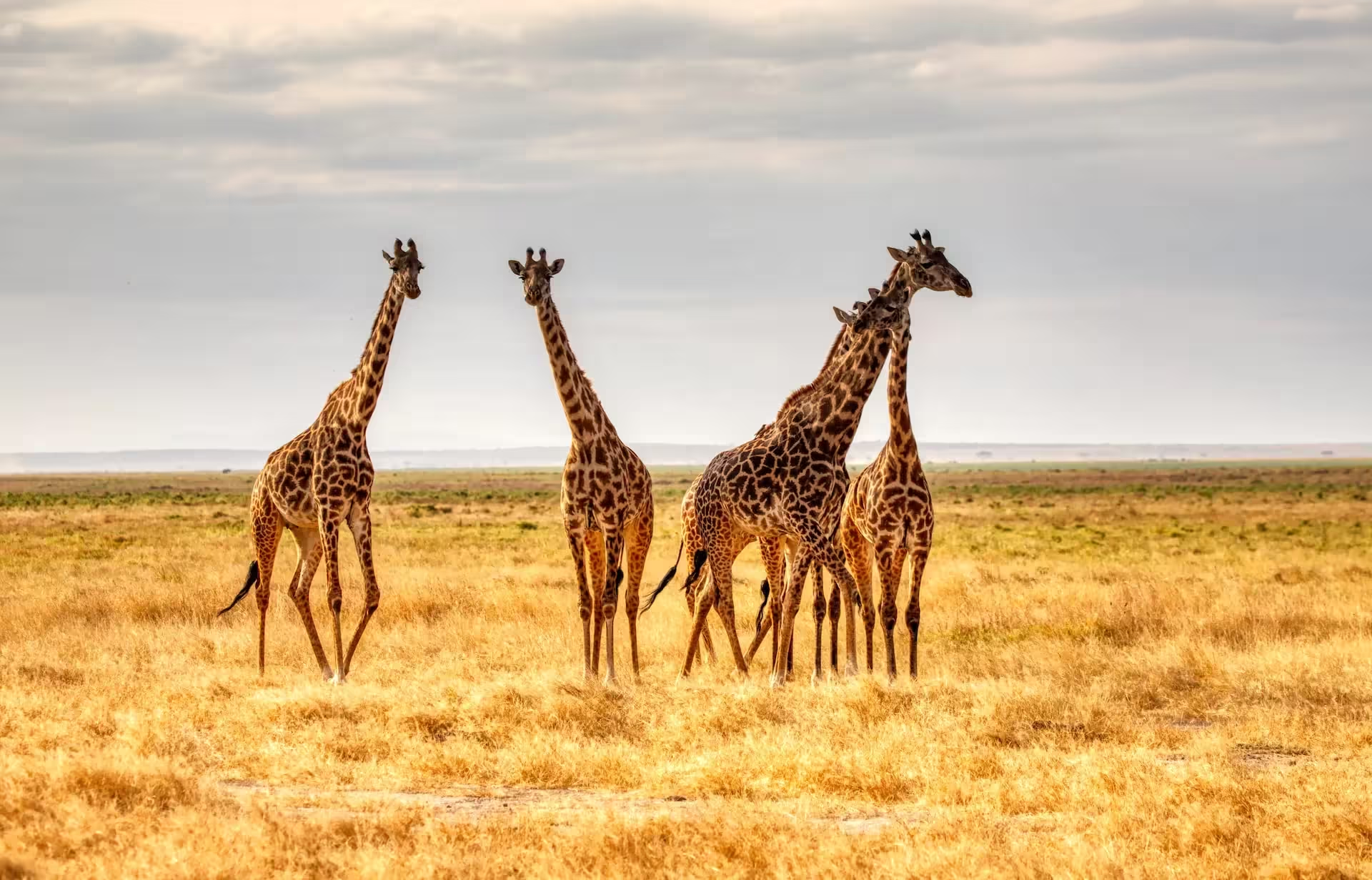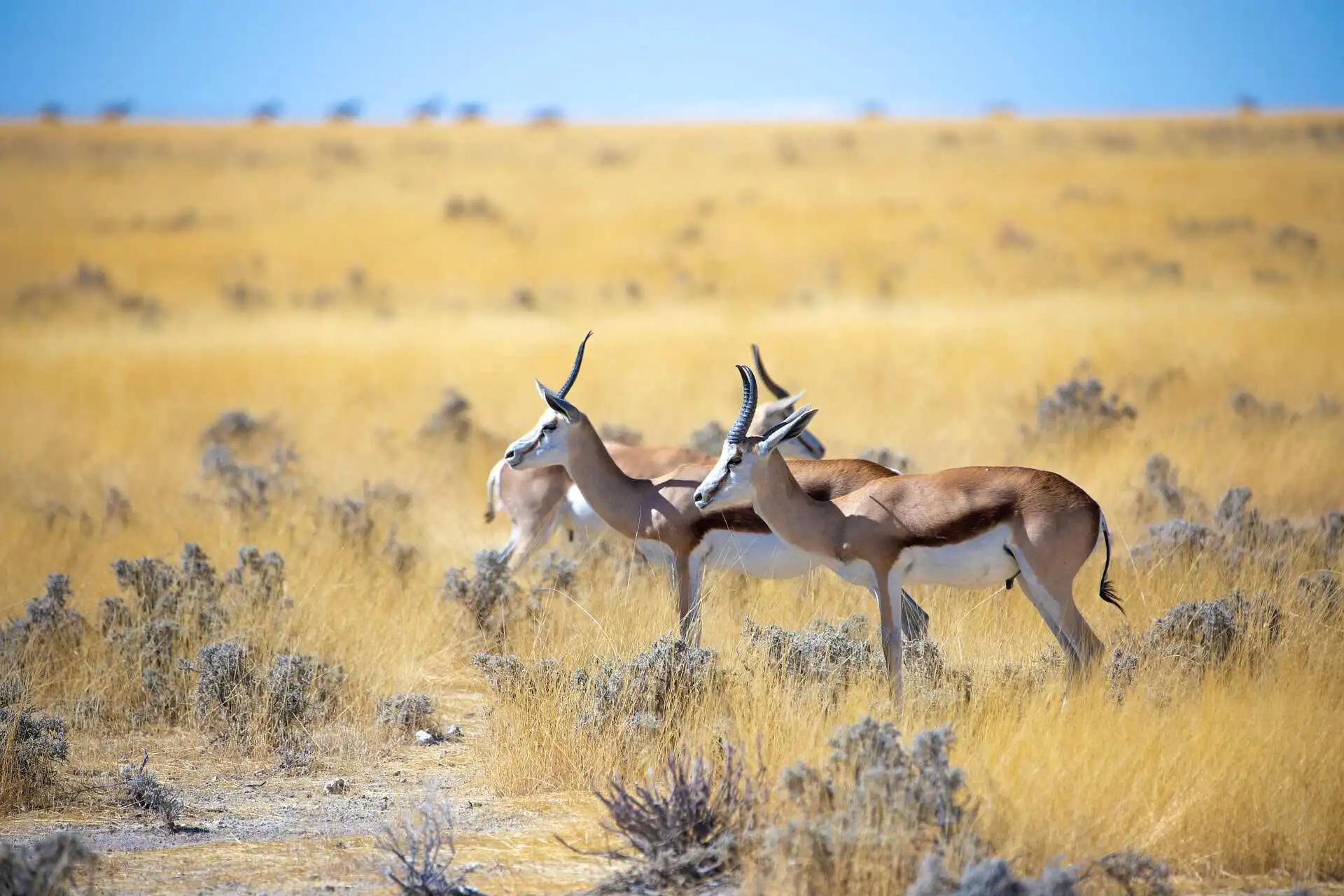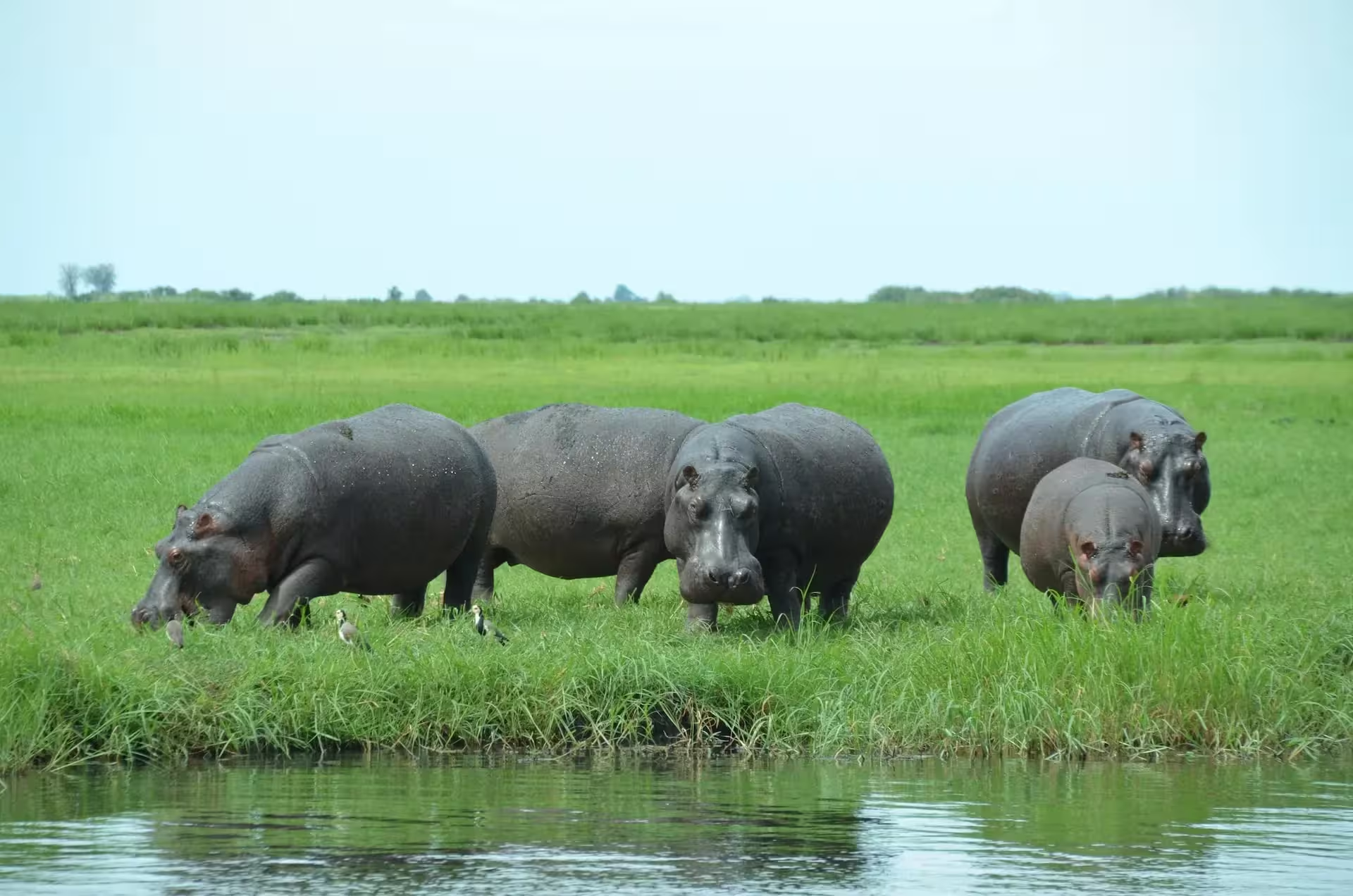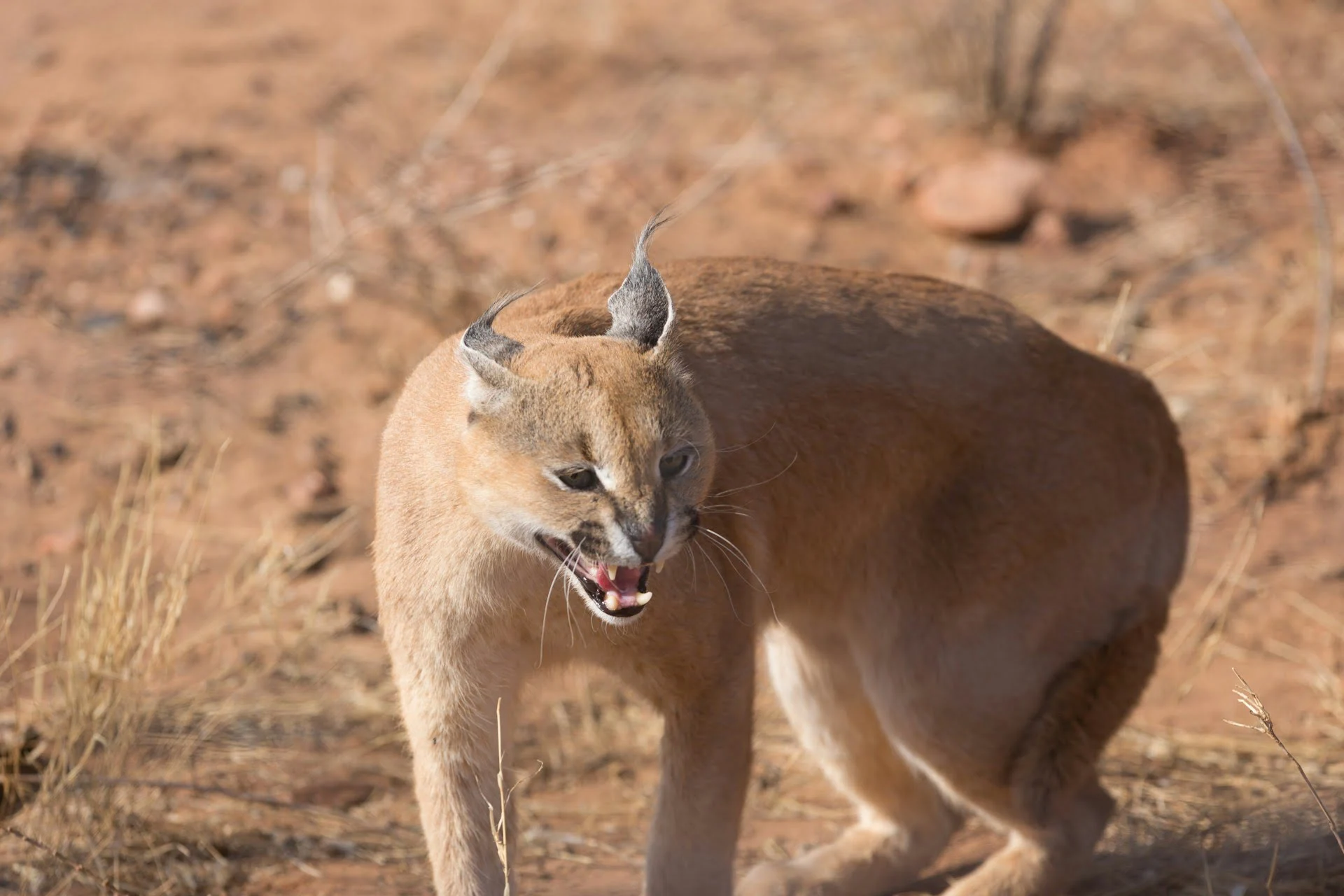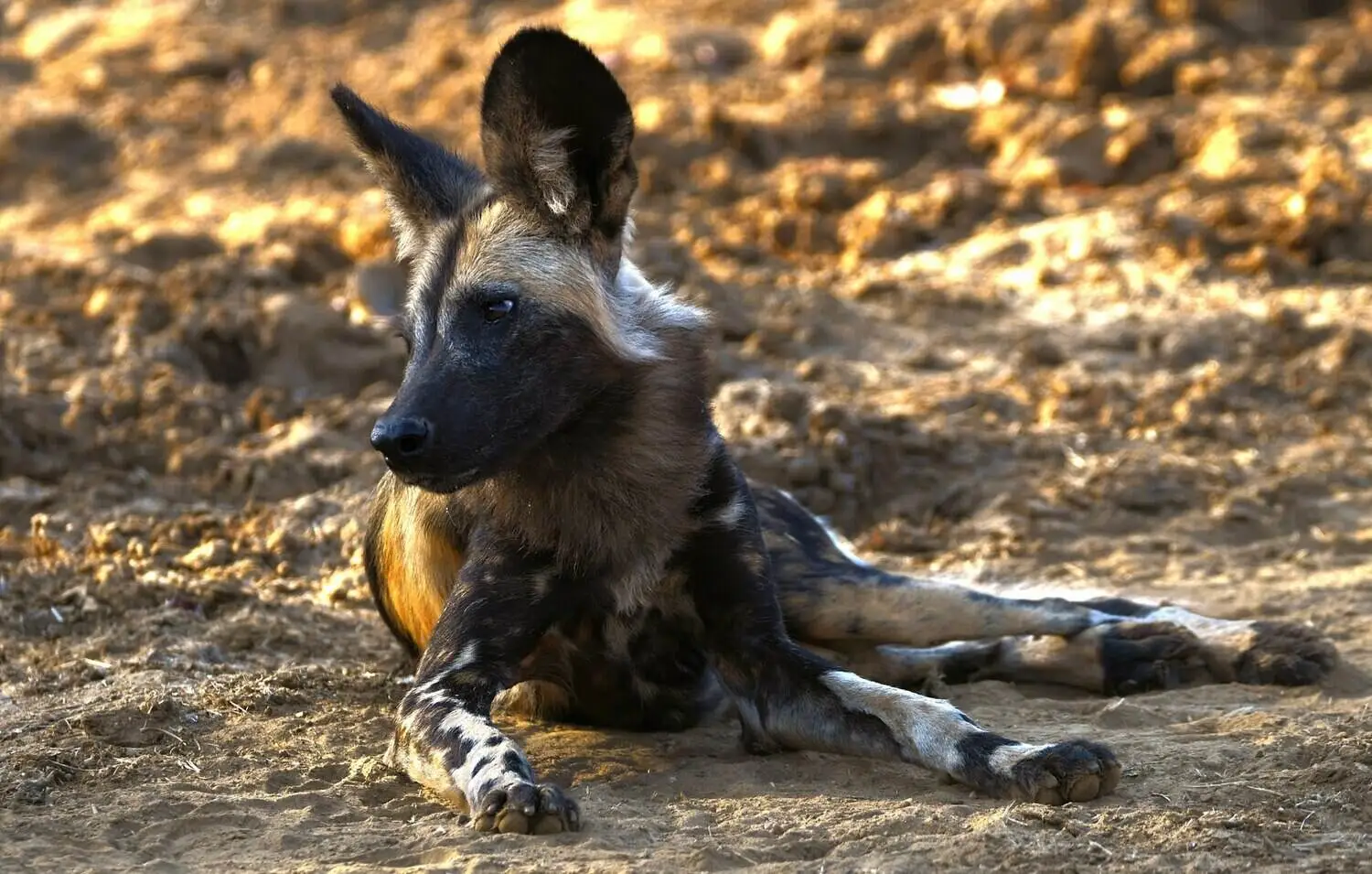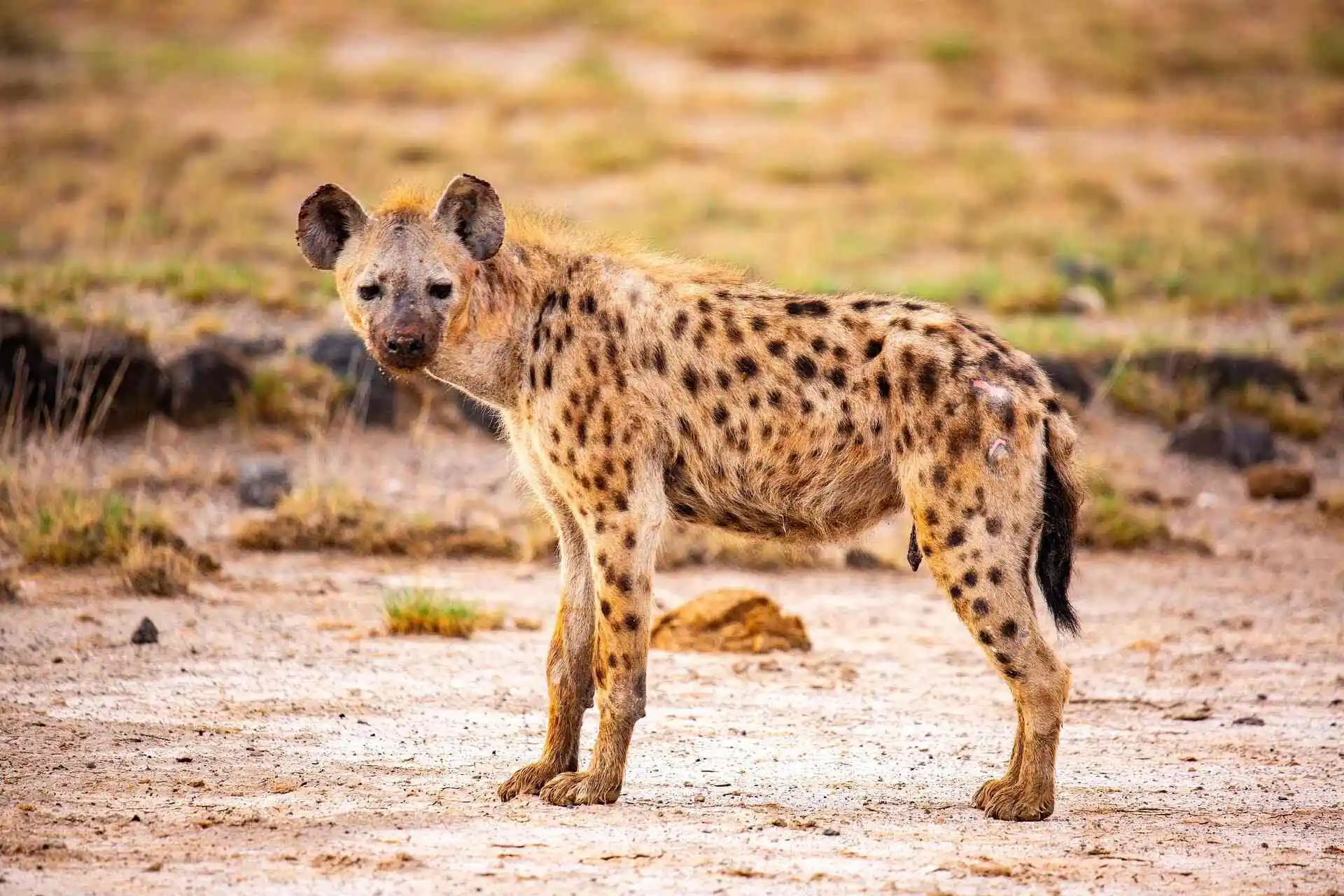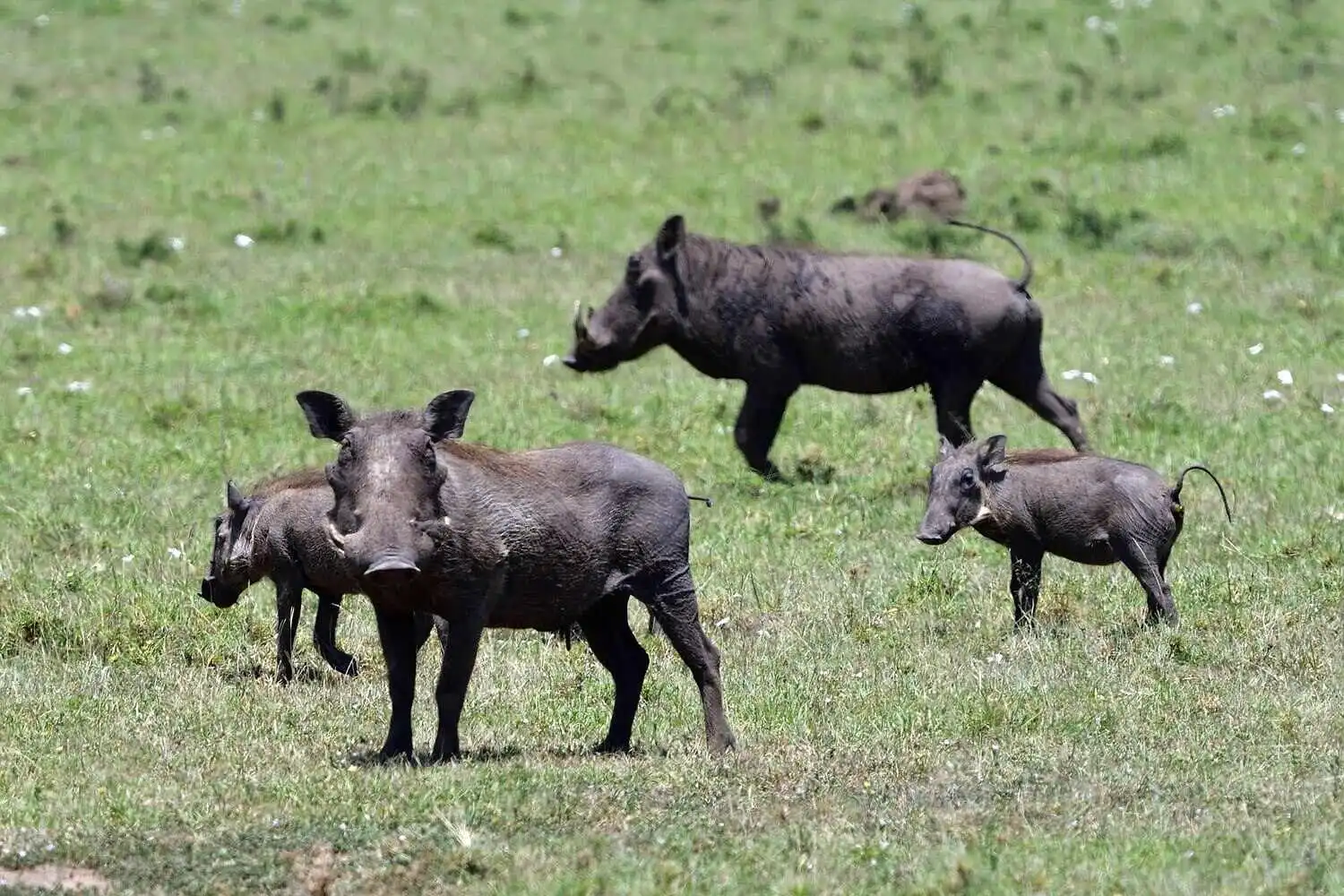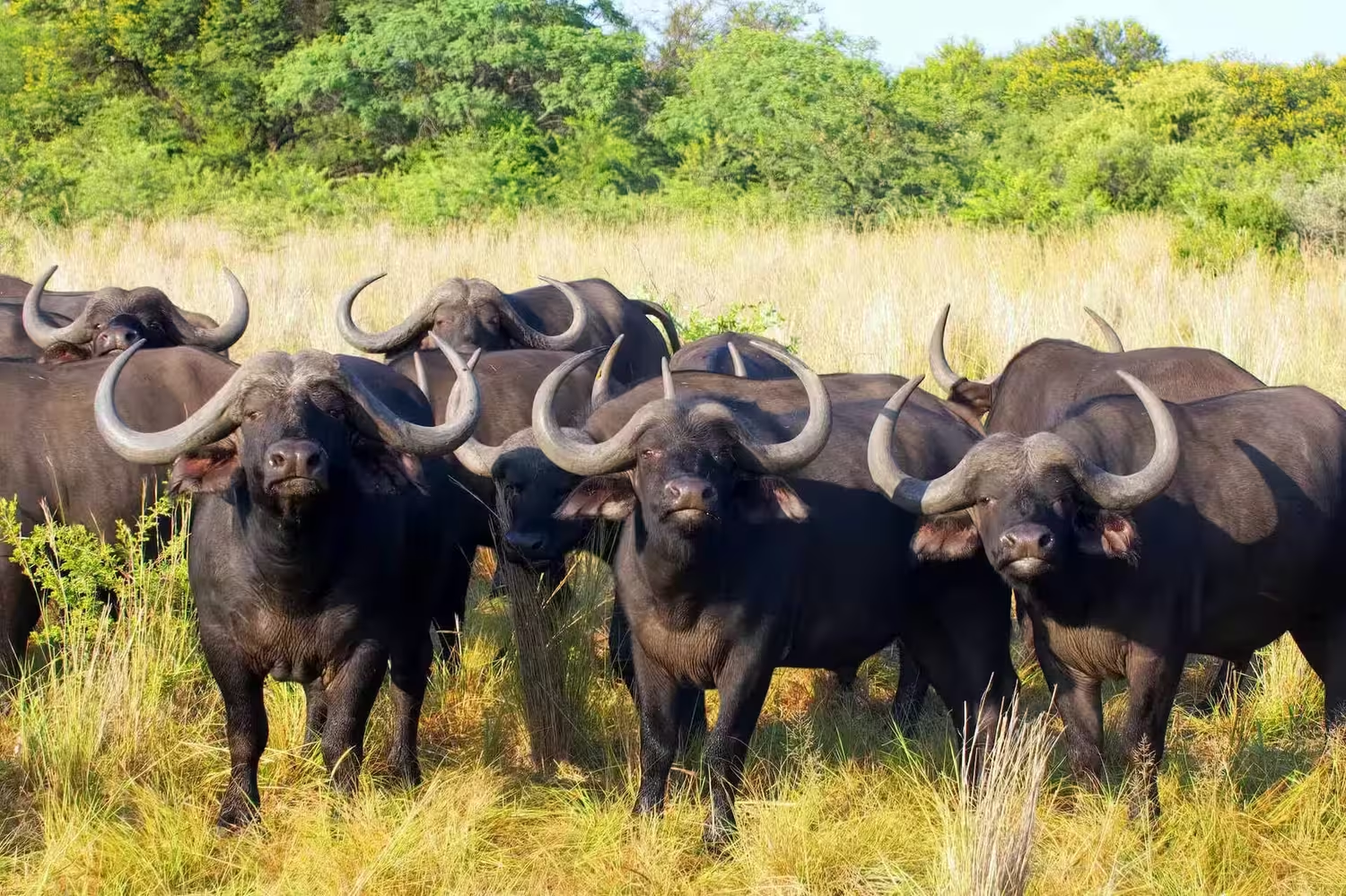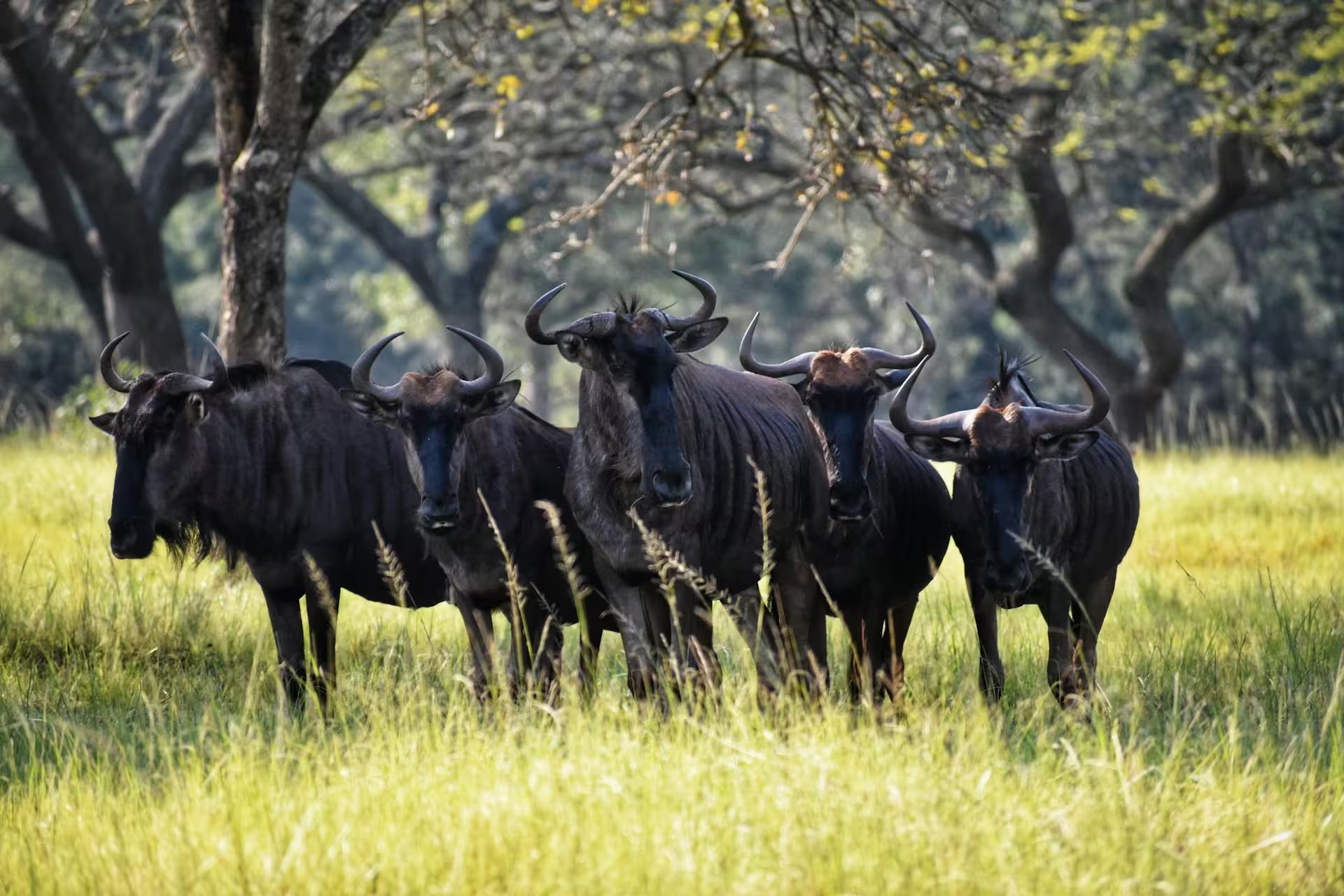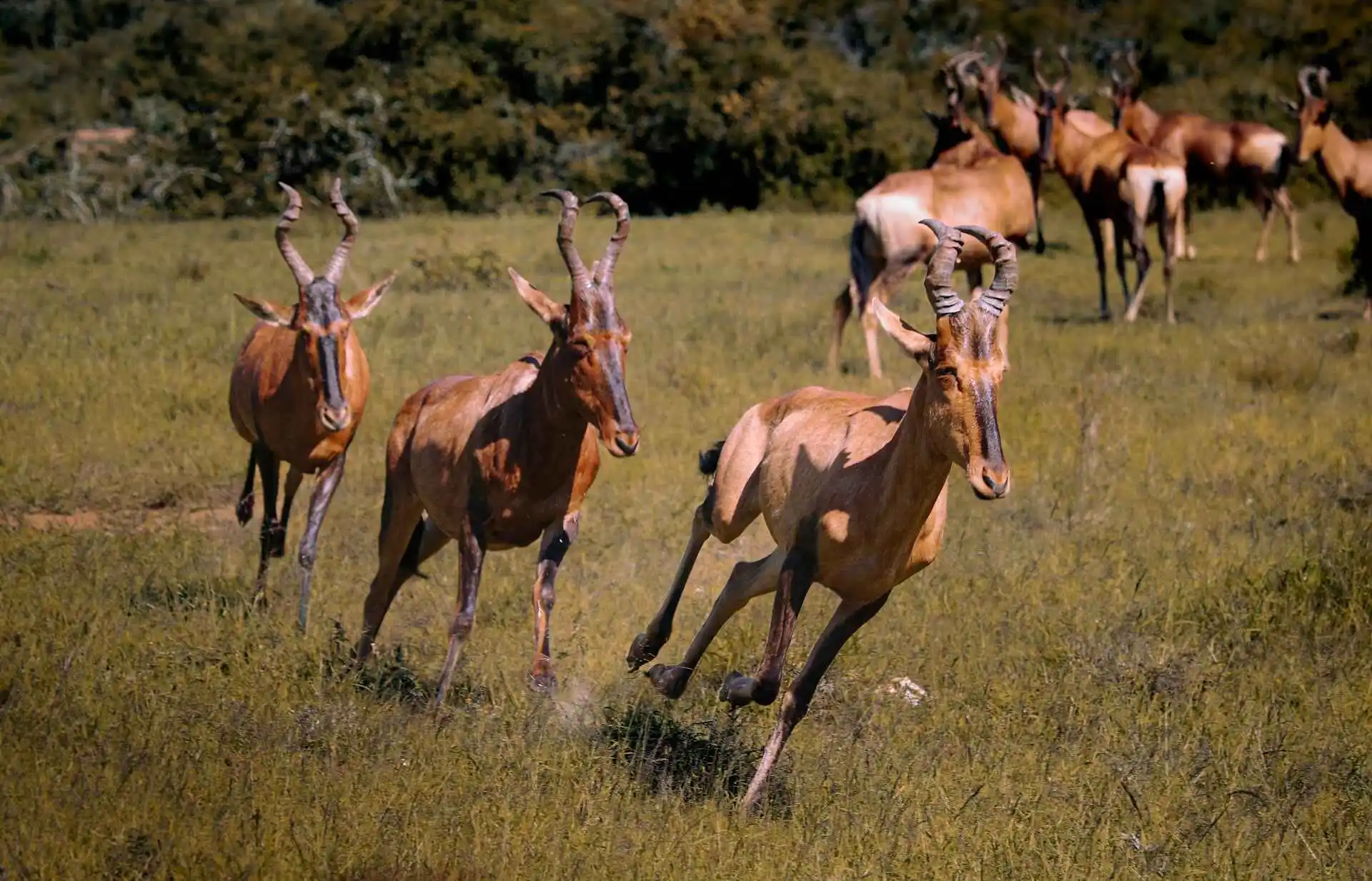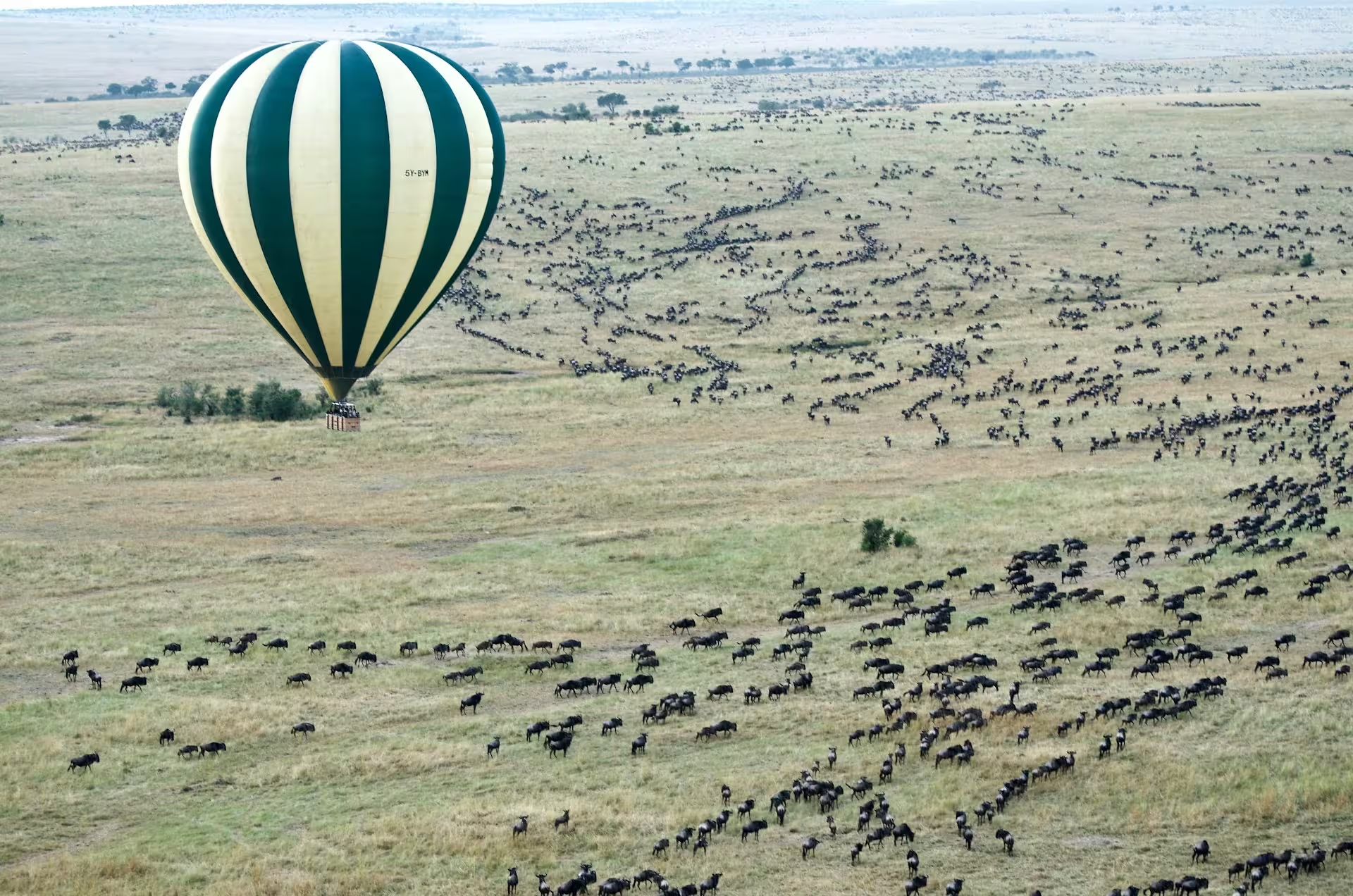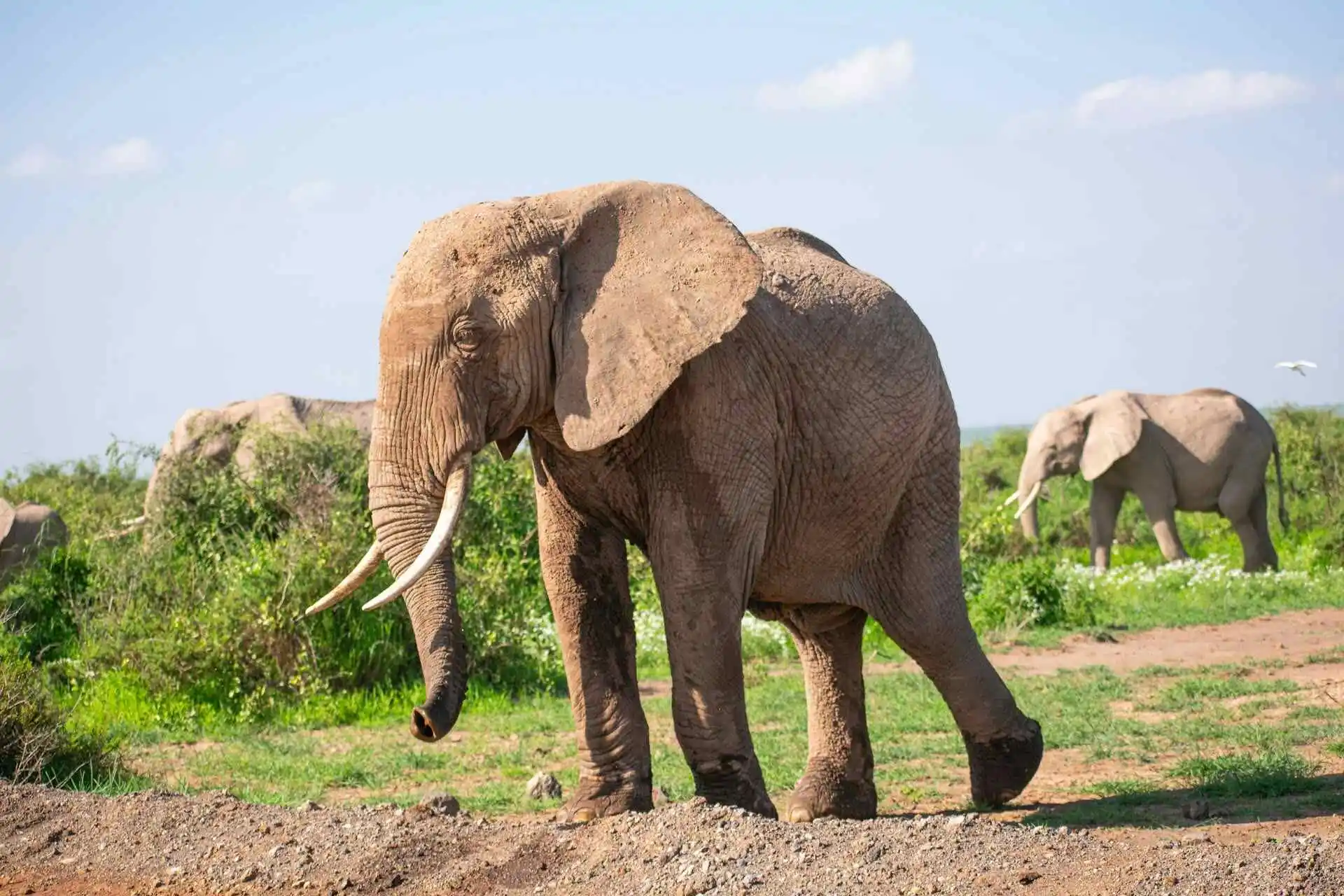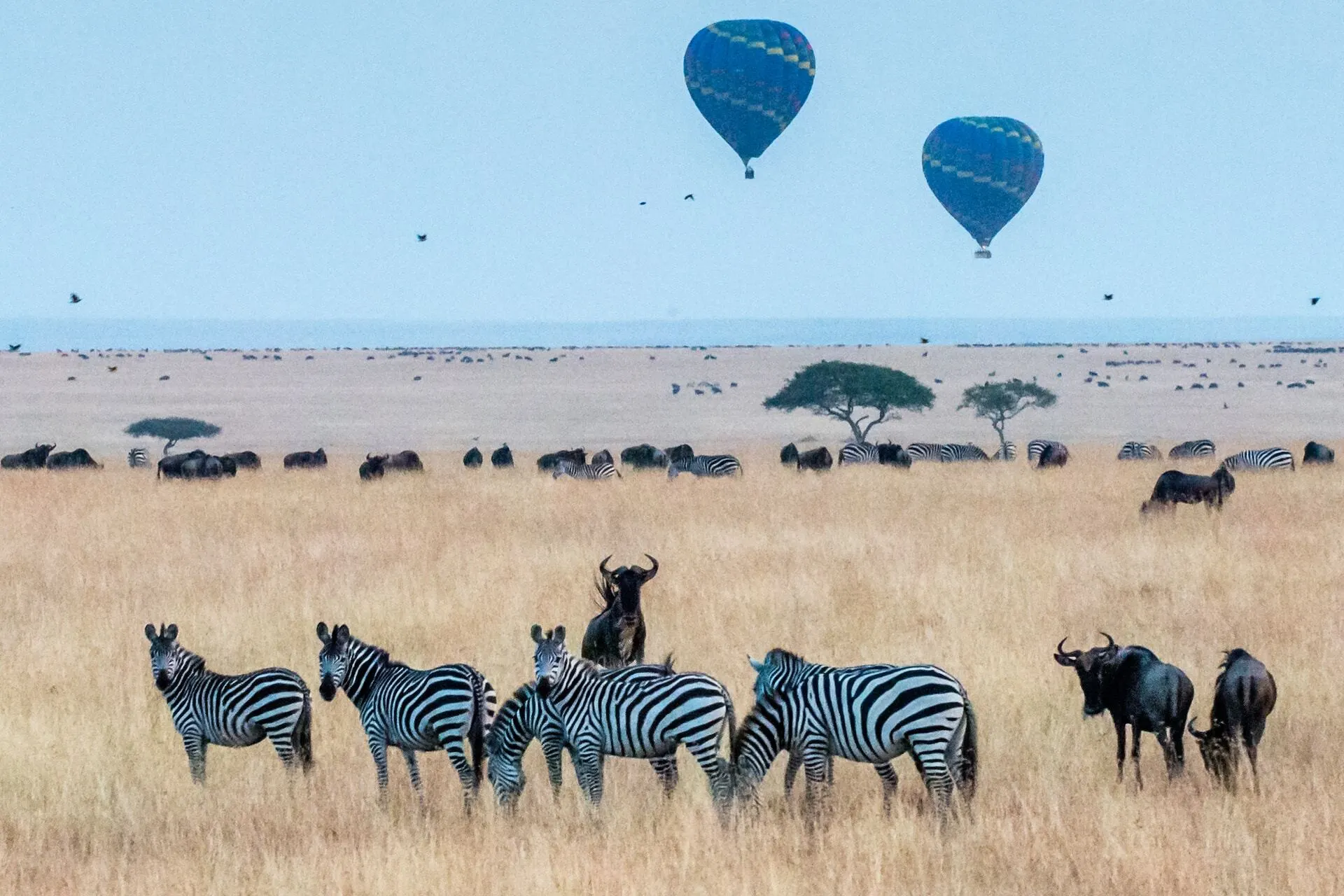How Do African Hyenas Look?
Hyenas look strong and rugged. Their sloping backs, broad shoulders, and powerful jaws give them a tough and fearless look. These animals are built to crush bones and eat just about anything. However, the most common hyenas in Africa are spotted hyenas.
They come with sandy or grey coats covered in dark spots. Their ears are round, and their necks are thick. They stand tall for up to 80 cm at the shoulder and can weigh up to 80 kg. Many people think hyenas are weak because of their odd walk or laugh, but that is not true.
Key Characteristics Table
| Characteristic | Details |
|---|---|
| Life Span | 12 – 15 years |
| Top Speed | Around 60 km/h |
| Bite Force | Over 1,000 PSI |
| Height | 75 to 85 cm |
| IUCN Status | Least Concern |
Types of Hyenas You Will Find in Africa
You will come across three types of hyenas in Africa. Each of them has their own unique behaviours and characteristics:
Striped Hyena
More solitary, with a greyish coat and black stripes. Mostly found in North and East Africa.
What Do Hyenas Eat?
Hyenas are not just scavengers, these animals can be great hunters, too. They work in teams to bring down big animals like wildebeests, zebras, and antelopes. Sometimes, they even take on buffalos.
They also eat leftovers. Bones, hooves, and other scraps don’t go to waste. Their digestive system is super strong, so they can handle things other animals leave behind. Brown and striped hyenas usually hunt more. But spotted hyenas can do both, hunt and scavenge at the same time
Hyenas in their Culture and Nature
In many African stories, hyenas show up as bold tricksters or mysterious characters. Some people see them as symbols of courage or survival. Call it feared or respected, hyenas always don’t forget to leave an impression. In the wild, they play a big role. By eating dead animals and bones, hyenas help stop the spread of disease. They clean up the nature’s mess while keeping the ecosystem healthy.
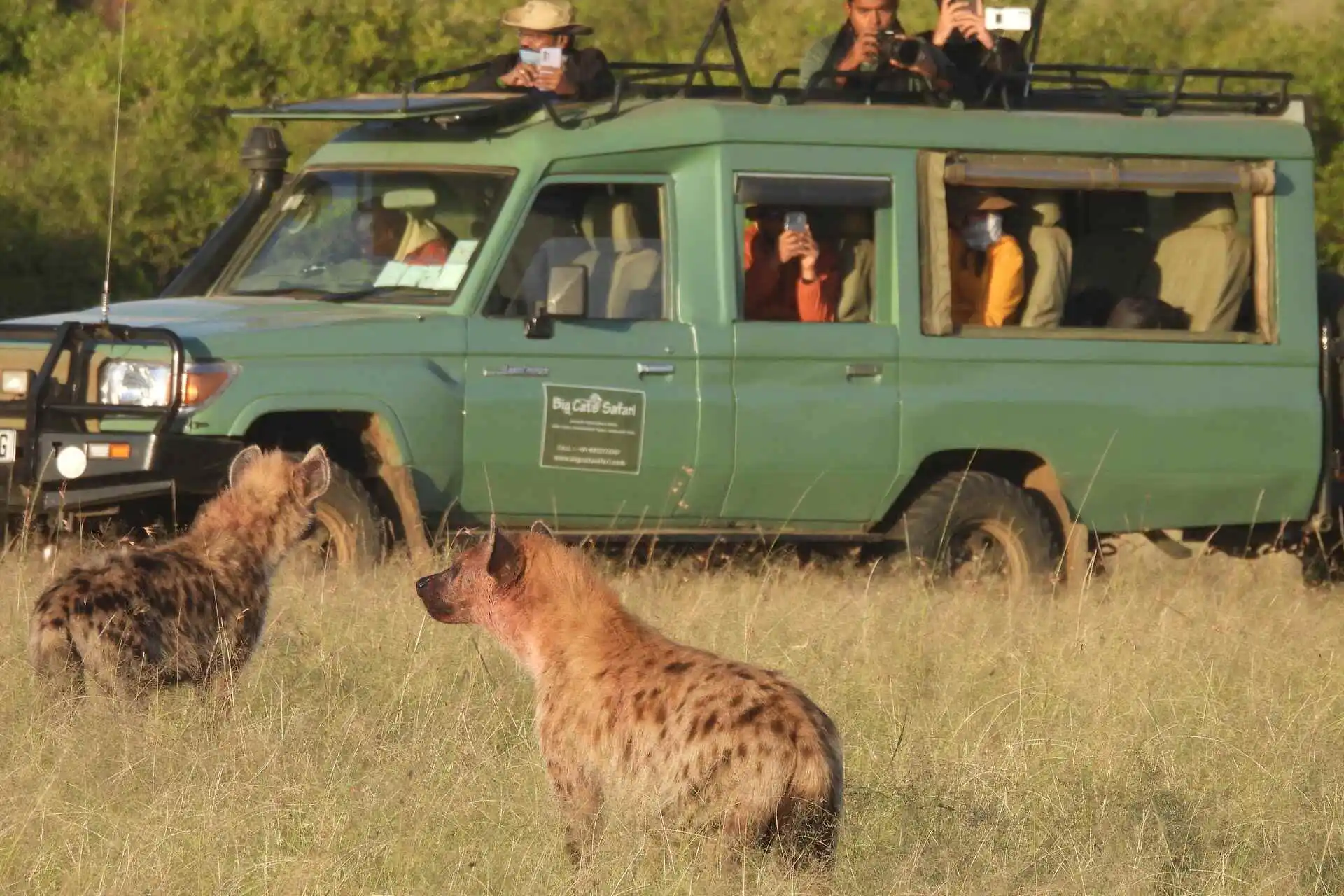
Hyena on Safari with Big Cats Safari
How Do Hyenas Communicate with Each Other?
Hyenas have a rich and fascinating way of communicating. They make all kinds of sounds that can be giggles, grunts, whoops, growls, and screams.
- Doing the famous laugh when they are nervous or excited, especially during feeding.
- Making whooping sounds to call clan members across long distances.
- Using scent-marking with their anal glands to mark territory and share messages.
- Using body language like tail movements or ear positions to show dominance or fear.
You can hear their sounds from kilometres away, especially at night. It is one of the most chilling and exciting things to hear on an African safari.
Wild and Weird Facts About Hyenas
- Hyenas do not laugh for fun. Their laugh is a way to talk when they are excited or fighting over food.
- In hyena society, females rule. The female spotted hyenas are bigger and stronger than the males.
- Their one bite can crush elephant bones.
- Spotted hyenas live in big clans which are sometimes up to 80 members.
- Their poop is white because they eat so many bones filled with calcium.
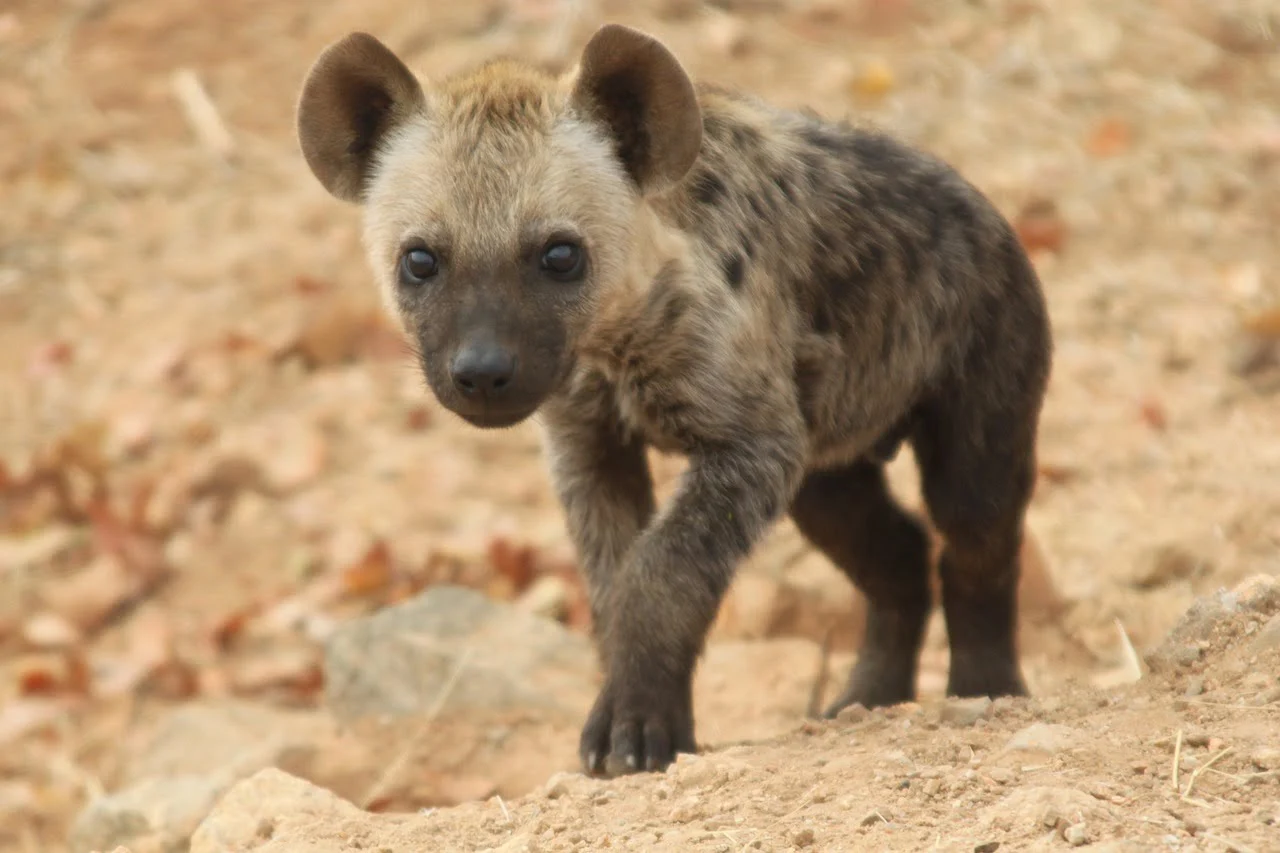
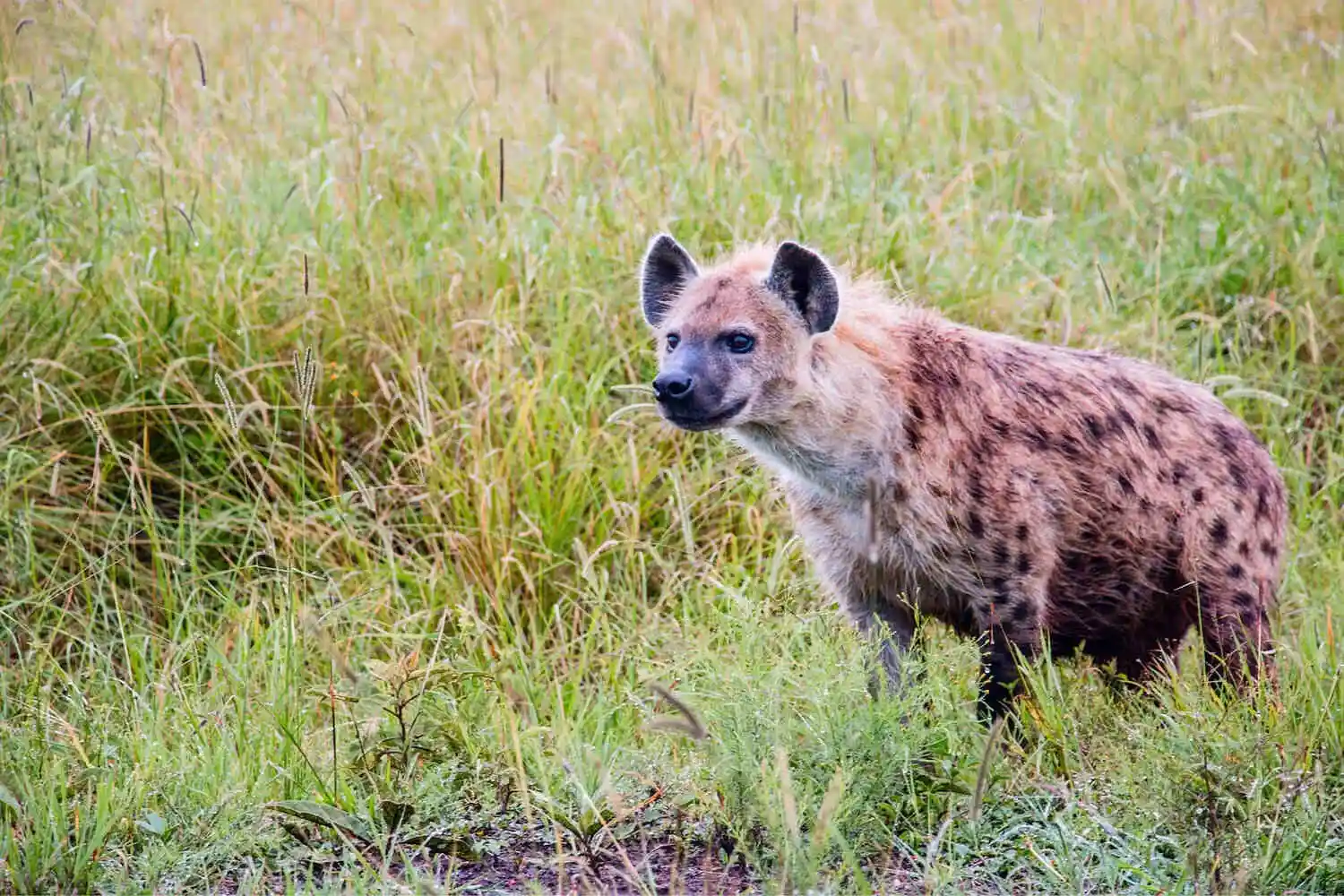
Where Can You See Hyenas in Africa?
Want to see hyenas in the wild? You are in good luck. They live all across Africa. Here are some of the best places:
- Masai Mara, Kenya: Look near wildebeest herds during migration for spotted hyenas.
- Serengeti, Tanzania: You will often spot large hyena groups early in the morning or during night drives.
- Kruger, South Africa: A great place to see them both day and night.
- Etosha, Namibia: Best sightings are around waterholes during the dry season.
- Hwange, Zimbabwe: You can hear their calls near campsites at night and see them during safari drives.
Best Tip: Hyenas are most active at night. For the best chance to see or hear them, go on a night safari or an early morning drive.
African hyenas might look a little strange, but they are some of the smartest and most important animals on the continent. So, the next time you are on safari, do not overlook them. Listen for their eerie laugh, look out for their powerful presence, and appreciate the wild spirit they bring to Africa’s untamed lands.
Key Differences Between African Hyenas
| Feature | Spotted Hyena | Striped Hyena | Brown Hyena |
|---|---|---|---|
| Scientific Name | Crocuta crocuta | Hyaena hyaena | Parahyaena brunnea |
| Appearance | Sandy to grey coat with dark spots, rounded ears, thick neck | Pale grey coat with dark vertical stripes, pointed ears, bushy tail | Long shaggy dark-brown fur, striped legs, large mane |
| Size | Largest of the three – up to 86 kg (190 lbs) | Medium – up to 55 kg (121 lbs) | Medium – up to 72 kg (160 lbs) |
| Social Behavior | Very social – lives in large clans of up to 80 | Mostly solitary or found in pairs | Lives in small clans, usually 4–15 members |
| Vocalization | Known for the famous “laugh” or giggle sound | Quiet – growls, howls, and chattering | Grunts and growls, less vocal overall |
| Habitat | Widespread across savannahs and grasslands | Prefers dry scrub, rocky deserts, and open woodlands | Found in deserts and semi-arid areas, especially southern Africa |
| Diet | Hunts and scavenges – strong hunter | Mostly scavenger – rarely hunts | Primarily scavenger – feeds on carcasses and small animals |
| Dominance | Matriarchal – females are bigger and dominant | No strong female dominance | Less hierarchical than spotted hyenas |
| Range in Africa | Sub-Saharan Africa | Northern & eastern Africa, scattered in the south | Southern Africa (Namibia, Botswana, parts of Zimbabwe and SA) |

